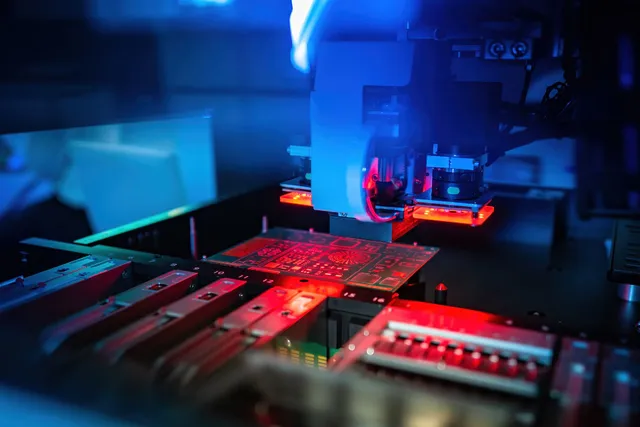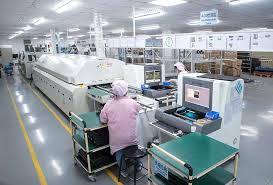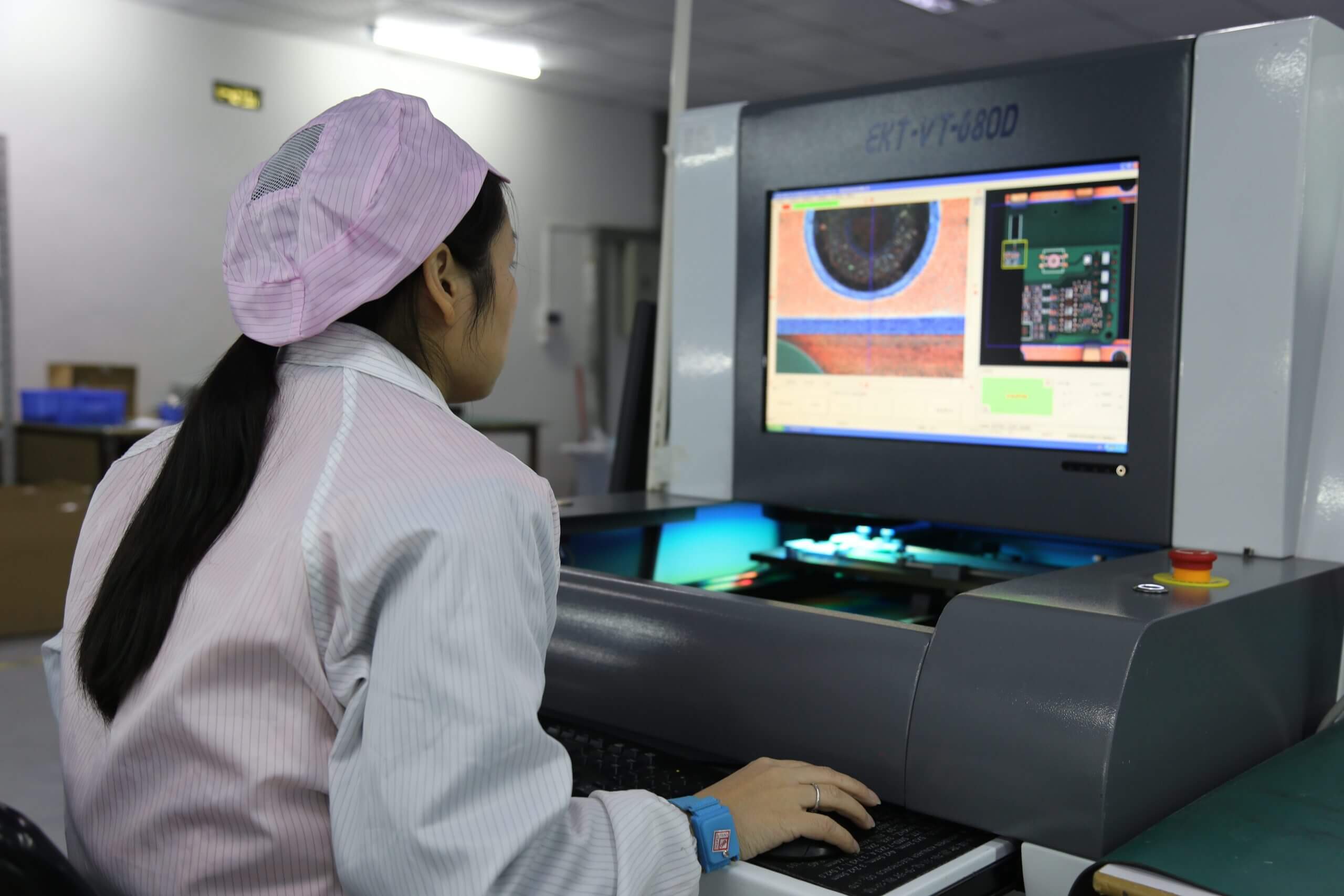In the fast-paced world of electronics manufacturing, ensuring the quality of printed circuit boards (PCBs) is critical. One of the most effective ways to achieve this is through Automated Optical Inspection (AOI). If you're looking for a PCB AOI implementation guide, tips on AOI system setup, or insights into AOI process optimization, you're in the right place. This blog will explore the benefits and challenges of AOI, as well as provide an AOI ROI analysis to help you understand its value. Let’s dive into how AOI can transform your PCB production process with precision and efficiency.
What Is Automated Optical Inspection (AOI) and Why Does It Matter?
Automated Optical Inspection, or AOI, is a technology used in PCB manufacturing to detect defects and ensure quality. It employs high-resolution cameras, advanced lighting, and sophisticated software algorithms to inspect boards for issues like missing components, soldering defects, or incorrect placements. Unlike manual inspection, which can be slow and prone to human error, AOI delivers fast, accurate results, making it a cornerstone of modern electronics production.
With PCBs becoming smaller and more complex—often featuring components as tiny as 0.4mm in size and trace widths below 0.1mm—manual inspection struggles to keep up. AOI systems can detect defects at a microscopic level, ensuring that even the most intricate designs meet quality standards. For manufacturers aiming to reduce costs and improve reliability, AOI is not just an option; it’s a necessity.
The Benefits of AOI in PCB Manufacturing
Implementing AOI in your production line offers several advantages. Below are some key benefits that highlight why this technology is indispensable for ensuring high-quality PCBs.
- Enhanced Accuracy: AOI systems can detect defects with a precision rate often exceeding 99%, identifying issues like solder bridges or misaligned components that might be missed by the human eye.
- Speed and Efficiency: These systems can inspect hundreds of boards per hour, significantly reducing the time spent on quality checks compared to manual methods, which might take several minutes per board.
- Cost Savings: By catching defects early in the production process, AOI prevents costly rework or product failures down the line. Studies suggest that fixing a defect post-assembly can cost up to 10 times more than addressing it during manufacturing.
- Consistency: Unlike human inspectors who may tire or vary in performance, AOI delivers consistent results, ensuring every board meets the same high standards.
- Data Collection: AOI systems generate detailed reports on defects and trends, allowing manufacturers to refine processes and prevent recurring issues.

Challenges of AOI Implementation
While the benefits are clear, AOI implementation is not without its hurdles. Understanding these challenges can help you prepare and address potential issues before they impact your production line.
- High Initial Cost: Setting up an AOI system can be expensive, with equipment costs ranging from $50,000 to over $200,000 depending on the complexity and features. This upfront investment may be a barrier for smaller manufacturers.
- Programming Complexity: Configuring AOI software to recognize specific defects or board designs requires expertise. Incorrect programming can lead to false positives or missed defects, with some systems reporting false rejection rates as high as 5-10% if not optimized.
- Limited Detection Scope: While AOI excels at surface-level inspections, it may struggle with hidden defects like internal soldering issues or component functionality, necessitating additional testing methods.
- Maintenance Needs: Regular calibration and maintenance are essential to keep AOI systems accurate. Neglecting this can result in declining performance over time.
Despite these challenges, with proper planning and execution, the long-term gains of AOI often outweigh the initial obstacles.
A Step-by-Step PCB AOI Implementation Guide
Implementing AOI in your PCB manufacturing process requires careful planning and execution. Follow this detailed guide to ensure a smooth transition and maximize the technology’s potential.
Step 1: Assess Your Needs and Goals
Start by evaluating your production volume, defect rates, and quality requirements. Are you producing high-volume, complex boards with tight tolerances (e.g., 0.05mm spacing between traces)? Or are your boards simpler with less stringent demands? Defining your goals—such as reducing defect rates by 20% or cutting inspection time by 50%—will help you choose the right AOI system.
Step 2: Select the Right AOI System
AOI systems vary widely in capabilities. Consider factors like camera resolution (at least 5 megapixels for high-density boards), inspection speed (boards per minute), and software features (e.g., 3D imaging for multilayer boards). Ensure the system supports your board sizes and component types, especially if you work with tiny 0201 components or intricate BGA packages.
Step 3: Plan Your AOI System Setup
Position the AOI machine at a strategic point in your production line, typically after soldering or component placement, to catch defects early. Ensure the setup includes adequate lighting (often LED-based with adjustable intensity) and a stable conveyor system to handle boards without vibration. Allocate space for a control station where operators can monitor results and adjust settings.

Step 4: Train Your Team
Invest in training for operators and technicians to program, operate, and maintain the AOI system. A well-trained team can reduce false positives by fine-tuning inspection parameters and ensure the system runs at peak efficiency. Training might take 1-2 weeks depending on the system’s complexity.
Step 5: Test and Calibrate
Before full deployment, run test batches of PCBs to calibrate the system. Use known defective boards to verify that the AOI detects issues like solder voids or misplacements. Adjust thresholds to balance sensitivity—avoiding both missed defects and unnecessary rejections. Calibration might need to be repeated monthly to maintain accuracy.
Step 6: Integrate with Other Processes
Link AOI data with other quality control systems, such as X-ray inspection for internal defects or functional testing for performance. This holistic approach ensures comprehensive quality assurance across your production line.
AOI Process Optimization Techniques
Once your AOI system is up and running, optimization is key to getting the most out of it. Here are some proven techniques to enhance performance and efficiency.
- Refine Inspection Parameters: Continuously adjust settings like contrast and defect thresholds based on defect data. For instance, if false positives for solder joint reflections are high, tweak the lighting angle or software filters to improve accuracy.
- Use 3D AOI for Complex Boards: If your PCBs have high-density interconnects or multilayer designs, upgrade to 3D AOI systems. These can measure height and volume, detecting issues like insufficient solder paste (below 50 micrometers) that 2D systems might miss.
- Analyze Defect Trends: Use AOI-generated reports to identify recurring defects, such as component misalignment in specific areas. Address root causes—perhaps a pick-and-place machine needs recalibration—to prevent future issues.
- Minimize Downtime: Schedule regular maintenance during off-hours to avoid disrupting production. Keep spare parts like camera lenses or lighting units on hand to quickly resolve hardware issues.

AOI ROI: Is It Worth the Investment?
One of the biggest concerns for manufacturers is whether the cost of AOI delivers a worthwhile return on investment (ROI). Let’s break down the financial impact with a practical AOI ROI analysis.
Cost Breakdown: A mid-range AOI system might cost $100,000 upfront, with annual maintenance and software updates adding another $10,000. Training and integration could add $5,000 initially.
Savings Potential: Assume your current defect rate is 5%, and each defective board costs $50 to rework. For a production volume of 10,000 boards per month, that’s $25,000 in monthly rework costs. If AOI reduces the defect rate to 1%, you save $20,000 monthly. Over a year, that’s $240,000 in savings—more than double the initial investment.
Intangible Benefits: Beyond direct savings, AOI improves customer satisfaction by reducing field failures, which can damage your reputation. It also shortens time-to-market by streamlining quality checks, potentially increasing revenue.
Based on these figures, many manufacturers see a full ROI within 6-12 months, especially in high-volume or high-reliability industries like automotive or medical electronics. For smaller operations, the payback period might be longer, but the quality improvements still justify the cost over time.
Best Practices for Long-Term AOI Success
To sustain the benefits of AOI, adopt these best practices as part of your quality control strategy.
- Regular Updates: Keep AOI software updated to leverage new algorithms and features that improve detection accuracy.
- Cross-Training: Train multiple team members on AOI operation to avoid bottlenecks if key staff are unavailable.
- Continuous Improvement: Use AOI data to drive broader process improvements, such as adjusting soldering temperatures (e.g., maintaining 260°C for lead-free solder) to reduce defects.
- Scalability Planning: As production grows, consider adding more AOI units or upgrading to faster systems to handle increased throughput without sacrificing quality.
Conclusion: Elevate Your PCB Quality with AOI
Automated Optical Inspection is a game-changer for PCB manufacturing, offering unmatched precision, speed, and cost savings. By following a structured PCB AOI implementation guide, optimizing your AOI system setup, and applying AOI process optimization techniques, you can significantly enhance product quality. While there are challenges to navigate, the benefits of AOI—coupled with a strong AOI ROI—make it a smart investment for any serious manufacturer.
At ALLPCB, we’re committed to supporting your journey toward flawless PCB production. Whether you’re just starting with AOI or looking to refine your existing setup, the insights in this guide can help you achieve consistent, high-quality results. Embrace AOI technology and take your manufacturing to the next level.
 ALLPCB
ALLPCB







